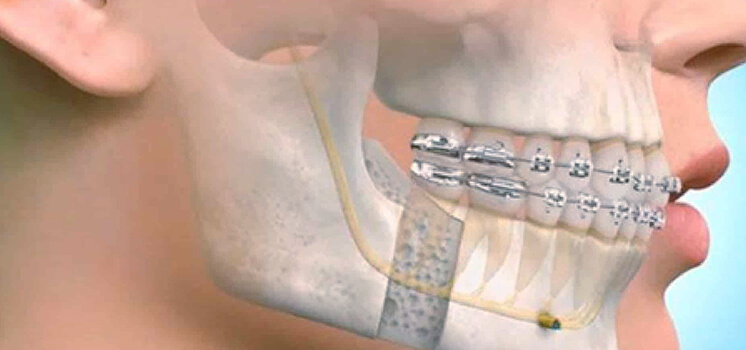Oral & Maxillofacial Surgery

Oral and maxillofacial surgeons are unique among dental specialists in a number of ways. After completing four years of dental school, they go on to spend another four years in a hospital-based residency program for surgery. There, they are trained alongside other medical residents in the techniques of emergency medicine, general surgery and anesthesiology. In fact, they are the only health care specialists (aside from anesthesiologists) who can administer all levels of sedation, up to general anesthesia.
Oral and maxillofacial surgeons focus on treating problems related to the hard and soft tissues of the face, mouth, and jaws (the upper jaw is referred to as the maxilla). While they sometimes work in a hospital, their practices are more often located in comfortable office settings. You may be referred to one of these specialists by your general dentist for a complex tooth extraction. Or, your orthodontist may send you for an examination if he or she suspects a problem with the alignment of your jaws.
It isn’t necessary to have an oral and maxillofacial surgeon perform every type of oral surgery; many dentists are expert at the more common procedures, such as simple extractions. However, for complex treatments that may require more invasive procedures or deeper levels of sedation, these specialists may be recommended. What kinds of procedures are they well-suited to perform? Let’s look at a few.
Oral and maxillofacial surgery (OMS or OMFS) specializes in treating many diseases, injuries and defects in the head, neck, face, jaws and the hard and soft tissues of the oral (mouth) and maxillofacial (jaws and face) region. It is an internationally recognized surgical specialty. In countries such as the UK and most of Europe, it is recognized as both a specialty of medicine and as such a medical degree or both a degree in medicine and dentistry is compulsory. In almost every other region including the United States, Canada, (all of North America, Central America, and South America), Australia, New Zealand, India, and all Asian countries, as well as all of Scandanavia (Sweden, Finland, Denmark, Norway) OMS is a recognized specialty of dentistry . All countries outside of the UK and Central Europe around the world hold that obtaining a medical degree for the speciality of oral and maxillofacial surgery is optional but not required.
An oral and maxillofacial surgeon is a regional specialist surgeon treating the entire craniomaxillofacial complex: anatomical area of the mouth, jaws, face, and skull, as well as associated structures.
Depending upon the jurisdiction, maxillofacial surgeons may require training in dentistry, surgery, and general medicine; training and qualification in medicine may be undertaken optionally even if not required.
Oral and maxillofacial surgery is widely recognized as one of the specialties of dentistry. In many countries, however, maxillofacial surgery is a medical specialty requiring both medical and dental degrees, culminating in an appropriate qualification (e.g. Fellow of the Royal College of Surgeons, FRCS, in the UK). All oral and maxillofacial surgeons, however, must obtain a university degree in dentistry before beginning residency training in oral and maxillofacial surgery. In the United States oral and maxillofacial residency programs are either four or six years in duration. Programs that grant the MD degree are six years in duration.
They also may choose to undergo further training in a one or two year subspecialty Oral and Maxillofacial Surgery Fellowship Training in the following areas:
- Cosmetic facial surgery
- Cranio-maxillofacial trauma
- Craniofacial surgery/pediatric maxillofacial surgery/cleft surgery
- Head and neck cancer – microvascular reconstruction
- Maxillofacial regeneration (reformation of the facial region by advanced stem cell technique)
The popularity of oral and maxillofacial surgery as a career for persons whose first degree was medicine, not dentistry, seems to be increasing in a few EU countries[clarification needed]. However, the public funds spent for 14 years of training are of a major concern for governments. Integrated programs are becoming more available to medical graduates allowing them to complete the dental degree requirement in about three years in order for them to advance to subsequently complete oral and maxillofacial surgical training.
Surgical procedures
Treatments may be performed on the craniomaxillofacial complex: mouth, jaws, face, neck, and skull, and include:
Dentoalveolar surgery (surgery to remove impacted teeth, difficult tooth extractions, extractions on medically compromised patients, bone grafting or preprosthetic surgery to provide better anatomy for the placement of implants, dentures, or other dental prostheses) Surgery to insert osseointegrated (bone fused) dental implants and maxillofacial implants for attaching craniofacial prostheses and bone anchored hearing aids.
Cosmetic surgery of the head and neck: (rhytidectomy/facelift, browlift, blepharoplasty/Asian blepharoplasty, otoplasty, rhinoplasty, septoplasty, cheek augmentation, chin augmentation, genioplasty, oculoplastics, neck liposuction, lip enhancement, injectable cosmetic treatments, botox, chemical peel etc.)
Corrective jaw surgery (orthognathic surgery), surgical treatment and/or splinting of sleep apnea, maxillomandibular advancement, genioplasty Diagnosis and treatment of:
- Benign pathology (cysts, tumors etc.)
- Malignant pathology (oral & head and neck cancer) with (ablative and reconstructive surgery, microsurgery)
- Cutaneous malignancy (skin cancer), lip reconstruction
- Congenital craniofacial malformations such as cleft lip and palate and cranial vault malformations such as craniosynostosis, (craniofacial surgery)
- Chronic facial pain disorders
- Temporomandibular joint (TMJ) disorders
- Dysgnathia (incorrect bite), and orthognathic (literally "straight bite")
- Reconstructive surgery
- Orthognathic surgery
- Maxillomandibular advancement
- Surgical correction of facial asymmetry
soft and hard tissue trauma of the oral and maxillofacial region (jaw fractures, cheek bone fractures, nasal fractures, LeFort fracture, skull fractures and eye socket fractures).
Dental Specialties


